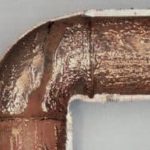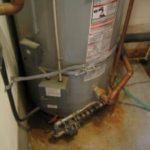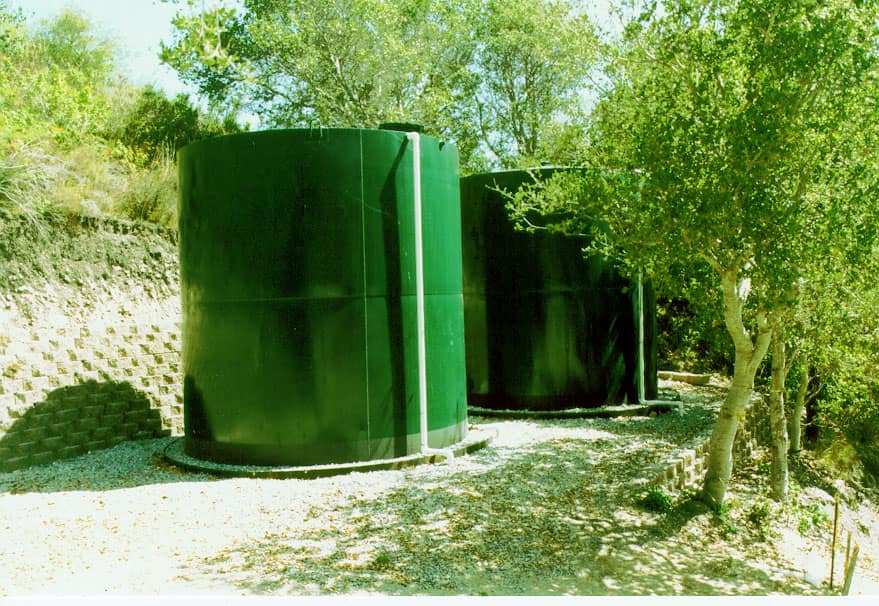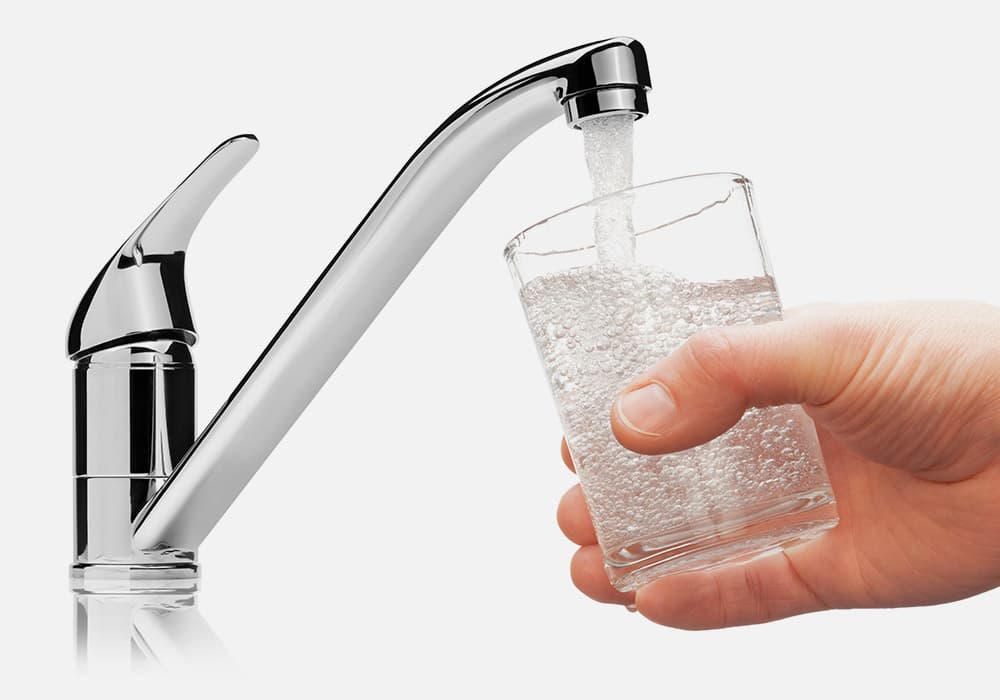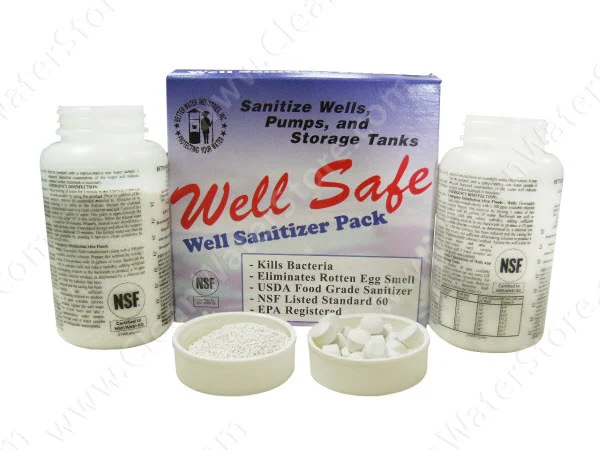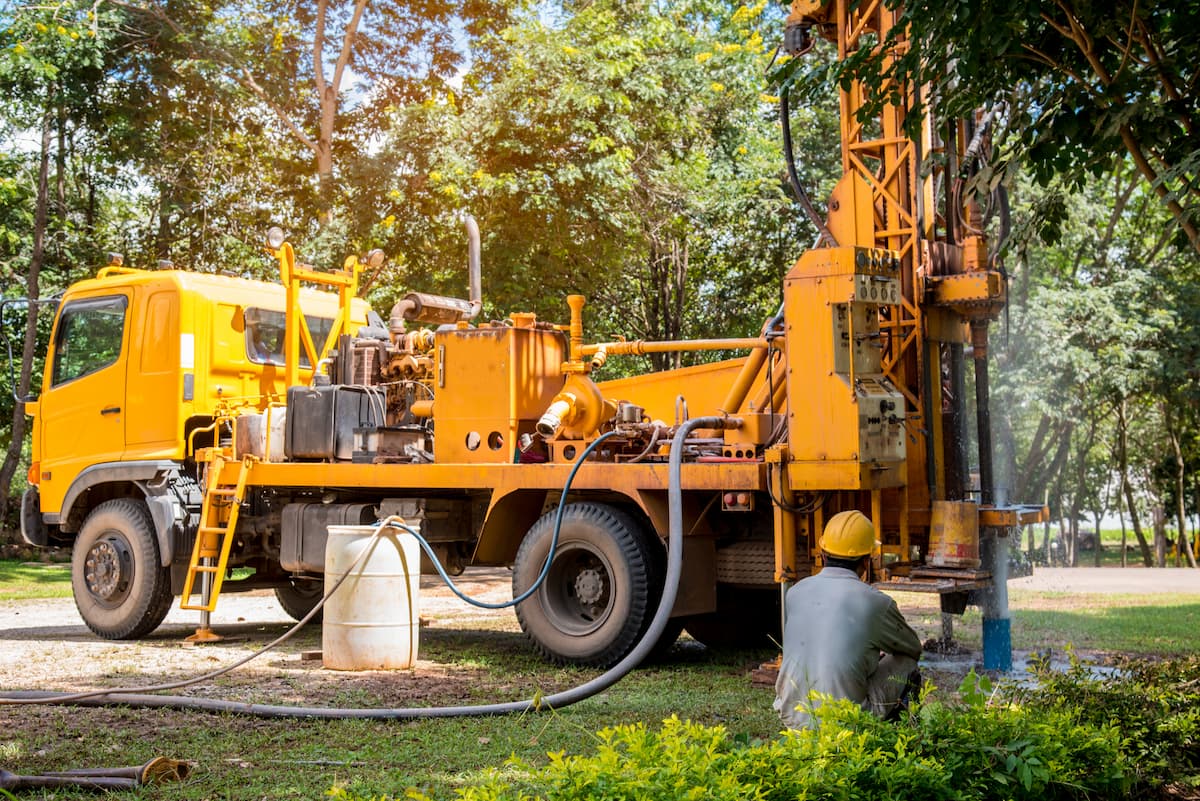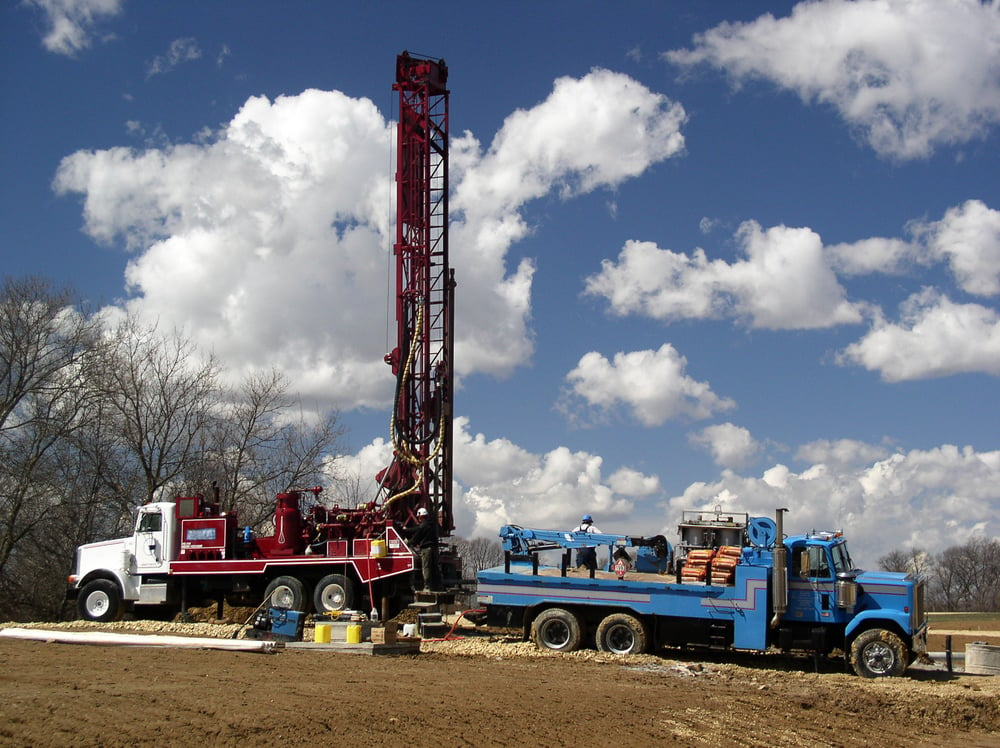Top 9 Causes of Copper Corrosion in Home Piping Systems
Understanding Copper Corrosion in Plumbing Systems
Copper corrosion is far more common than many homeowners realize—and it’s more than just an inconvenience. According to recent estimates, copper corrosion in residential and commercial plumbing systems costs the U.S. over $1 billion annually in repairs, water damage, and premature pipe replacement.
But beyond the financial toll, copper corrosion impacts your water quality, home infrastructure, and even personal health. If you’ve noticed blue-green stains on sinks and tubs, pinhole leaks in pipes, or a metallic taste in your drinking water, you could be facing an active corrosion issue. Understanding the signs and causes of corrosion is the first step toward protecting your plumbing system and maintaining safe, clean water.
What Is Copper Corrosion?
Copper corrosion refers to the gradual breakdown of copper pipe or tubing when it reacts with elements in its environment—most notably water. Chemical deterioration occurs when copper interacts with factors like low pH (acidic water), high dissolved oxygen, or stray electrical currents.
When corrosion occurs, copper ions dissolve into your water supply. This leads to pipe damage and costly leaks and introduces elevated copper levels into your tap water. Over time, this can stain plumbing fixtures, damage appliances, and even pose health risks if copper levels exceed EPA safety standards.
In short, copper corrosion compromises both the physical integrity of your plumbing system and the quality of the water flowing through it.
(If you want to learn more about Copper Corrosion and water, check this post out.)
Common Signs of Copper Corrosion
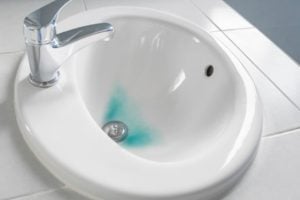
- Blue or green stains on sinks, tubs, or fixtures
- Laundry or blonde hair turning slightly blue
- Metallic taste in drinking water
- Pinhole leaks in copper pipe
- Water heater damage or reduced appliance lifespan
These symptoms indicate copper oxide formation and elevated copper levels—anything above 1.0 mg/L is considered unsafe for drinking.
Top Causes of Copper Pipe Corrosion
Copper corrosion can result from several factors, often interacting with each other. Here are the top 9 causes:
1. Low pH (Acidic Water)
Water with a pH below 7.0 can eat away at copper pipe from the inside out.
2. High pH (Alkaline Water)
Ironically, water that’s too alkaline (above pH 8.5) can also cause copper corrosion, especially when combined with other conditions.
3. High Dissolved Oxygen
Oxygen in the water accelerates oxidation, which forms copper oxide and causes blue-green staining.
4. High Total Dissolved Solids (TDS)
Water with a lot of minerals, salts, or other dissolved substances increases conductivity and encourages corrosion.
5. Corrosion-Causing Bacteria
Sulfate-reducing and iron bacteria are common in well water. These microbes can form slime and generate acids that contribute to pipe damage.
6. Stray Electrical Currents
Improperly grounded electrical systems or lightning strikes can cause electrochemical reactions that attack copper pipes.
7. High Water Velocity
Water moving too fast for the pipe diameter can lead to erosion-corrosion, particularly in circulating hot water systems.
8. Sediment or Grit
Sand, sediment, or fine grit flowing through plumbing can physically wear away pipe walls, especially at elbows and joints.
9. Improper Installation
Failing to ream pipe ends, using too much flux, or poor soldering techniques can all accelerate corrosion.
How to Stop Copper Corrosion in Your Home
The first step in treating copper corrosion is understanding what’s causing it.
1. Inspect and Test Your Water
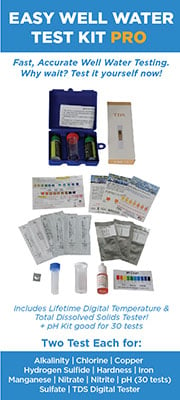
A test kit can help identify water chemistry that leads to corrosion. Conduct a full water test, especially for well water. Measure:
- pH
- Alkalinity
- Hardness
- TDS
- Copper
- Iron
- Manganese
- Sulfate
- Chloride
- Temperature
2. Evaluate the Plumbing System
Check the condition of your copper pipe and look for signs of stray current or electrical grounding issues. Install jumper cables around non-metallic fittings to ensure electrical continuity.
3. Adjust Water Chemistry
- For low pH: Use a calcite neutralizer or soda ash feeder to raise pH to 7.2–8.0.
- For high TDS: Install a whole house reverse osmosis system.
- For high bacteria: Disinfect with a chlorinator or ozone system.
4. Use Phosphate Feeders
A phosphate feeder can coat the inside of your copper pipe, creating a protective barrier that slows corrosion.
5. Replace or Reroute Pipes (If Needed)
If your copper pipes are extensively damaged or have frequent pinhole leaks, consider replacing them with PEX or stainless steel alternatives.
More ways to prevent corrosion
Plumbing engineers and system designers can significantly reduce pipe corrosion by making simple design adjustments.
- Minimize velocity. Use larger diameter piping to keep velocities low:
Cold line velocity should be less than 8 feet per second
Hotlines should be less than 4 feet per second.
- Minimize hot water temperature. In a circulating hot water system, make sure the return lines are the same diameter as the supply lines.
- Avoid stagnant sections; minimize direction and size changes.
- Specify low-corrosivity water-flushable fluxes
- Avoid stagnant sections
- Minimize direction and size changes
- Prevent electrical currents by grounding directly to a copper rod driven into the earth. Do not attach a grounding wire to water pipes other than the main pipe ground. Route wires away from water pipes, and don’t use galvanized nails that touch copper piping. CAUTION: This may need to be done by a qualified electrician.
- Avoid induced stresses – provide enough pipe support and allow for thermal expansion.
- Consider non-copper pipe (e.g., PEX or stainless steel) wherever its use is permitted.
- Use non- or low-lead faucets, valves, and appurtenances. Use low-flow fixtures and appliances and aeration faucet outlets.
- Choose fluxes that meet ASTM B813 standards.
- Specify that copper tubes and fittings be installed according to ASTM B828-92 standards
- Emphasize careful reaming of the cut ends to reduce turbulence. Plumbing inspectors and the Copper Development Association both report that un-reamed tubing corrodes and fails much more quickly than tubing that is properly reamed.
- Use correct ASTM B813 fluxes. Using excess flux or a corrosive flux causes early pipe failures.
Final Thoughts
Copper corrosion may start silently, but its effects are anything but subtle. From unsightly stains and unpleasant water taste to pipe failure and expensive repairs, the long-term impact on your plumbing system, water quality, and health can be significant.
Whether your home uses copper pipes for hot or cold water distribution, staying proactive is key. Begin by testing your water for pH, total dissolved solids, alkalinity, and copper levels. This helps determine if your water is naturally aggressive or chemically imbalanced. If so, it’s worth investing in water treatment solutions like a calcite neutralizer tank, soda ash feeder, or phosphate feeder to help stabilize water chemistry and prevent further corrosion.
For homes with persistent problems or pinhole leaks, consider upgrading to corrosion-resistant alternatives like PEX piping or stainless steel. Following best plumbing practices—such as proper grounding, minimizing hydraulic wear, and avoiding improper installation—can also reduce future corrosion risks.
Copper pipes can last decades when cared for properly. The more you understand corrosion causes, the better you'll be equipped to prevent costly damage and ensure your household water stays safe, clean, and reliable. If you're unsure where to start, consulting a water treatment specialist or a licensed plumber can help you design a long-term solution tailored to your home’s needs.
Fast Help Form Click Here
Best Plumbing Practices to Eliminate Copper Corrosion
Frequently Asked Questions (FAQs)
1. What causes copper pipes to turn blue or green?
Blue or green stains are caused by oxidized copper, a result of corrosion. When copper dissolves into your water and interacts with air or surfaces, it leaves behind this telltale discoloration.
2. Is copper in my water harmful?
Yes—elevated levels of copper (above 1.0 mg/L) can pose health risks, especially for infants and people with liver conditions. The EPA’s action level for copper in drinking water is 1.3 mg/L.
3. What are the most common causes of copper corrosion in plumbing?
Common causes include low or high pH, dissolved oxygen, high total dissolved solids, sediment, improper grounding, electrochemical reactions, and poor installation techniques.
4. How do I know if my home has a copper corrosion problem?
Look for blue-green stains on fixtures, pinhole leaks, metallic-tasting water, or unexplained damage to appliances and plumbing. Water testing can confirm elevated copper levels.
5. Can city water cause copper corrosion?
Yes. Even treated municipal water can be corrosive if it has an imbalanced pH, high dissolved solids, or other corrosive qualities. Internal plumbing factors like grounding or velocity may also contribute in such cases.
6. What’s the first step to fixing copper corrosion at home?
Start with a comprehensive water test. Test for pH, hardness, alkalinity, TDS, copper, and bacteria. This will help identify the cause and guide the right treatment solution.
7. How can I treat low-pH water to prevent corrosion?
Install a calcite neutralizer tank or soda ash feeder to raise the water’s pH to 7.2–8.0, making it less aggressive toward copper pipes.
8. What if I have high total dissolved solids (TDS)?
If TDS levels exceed 1,000 ppm, consider installing a whole-house reverse osmosis system followed by a calcite neutralizer to stabilize the pH after filtration.
9. Can plumbing design reduce copper corrosion risk?
Absolutely. Proper pipe sizes, reduced water velocity, minimized stagnant sections, using approved fluxes, and ensuring correct installation practices all help reduce corrosion.
10. Should I consider replacing copper pipes?
If corrosion damage is advanced or pinhole leaks are frequent, replacing old copper pipes with PEX or stainless steel may be a better long-term solution—especially in high-risk water conditions.
11. Can water pressure impact copper pipe corrosion?
Yes. High water pressure, especially in combination with high velocity, can wear down the inside of copper pipes over time. This hydraulic wear increases the likelihood of leaks and pipe failure. If your system consistently runs above 80 psi, it’s important to regulate pressure with a pressure-reducing valve.
12. What type of water filter is best for copper corrosion prevention?
A whole-house water treatment system tailored to your water chemistry is most effective. A calcite filter or soda ash injection system can help if low pH is the issue. If copper is already in the water, a filter with activated carbon or a reverse osmosis system may reduce it before the water reaches taps or appliances.
13. Are plastic pipes better than copper in corrosive water conditions?
In many cases, yes. PEX or CPVC pipes are more resistant to corrosion and are often recommended in areas with aggressive or acidic water. However, when choosing alternatives, installation quality and temperature tolerance should also be considered.
14. How often should I test for copper in my water?
If you’ve had past corrosion problems or live in an area with known water chemistry issues, test your water at least once a year. You should also test after plumbing upgrades or if you notice taste changes, discoloration, or leaks.
15. Can stray electrical currents really cause corrosion?
Yes. Improperly grounded appliances, wiring, or lightning strikes that travel through utility poles can introduce stray electrical currents into your plumbing system. These currents accelerate electrochemical corrosion in copper pipes. A licensed electrician can inspect and correct grounding issues.


